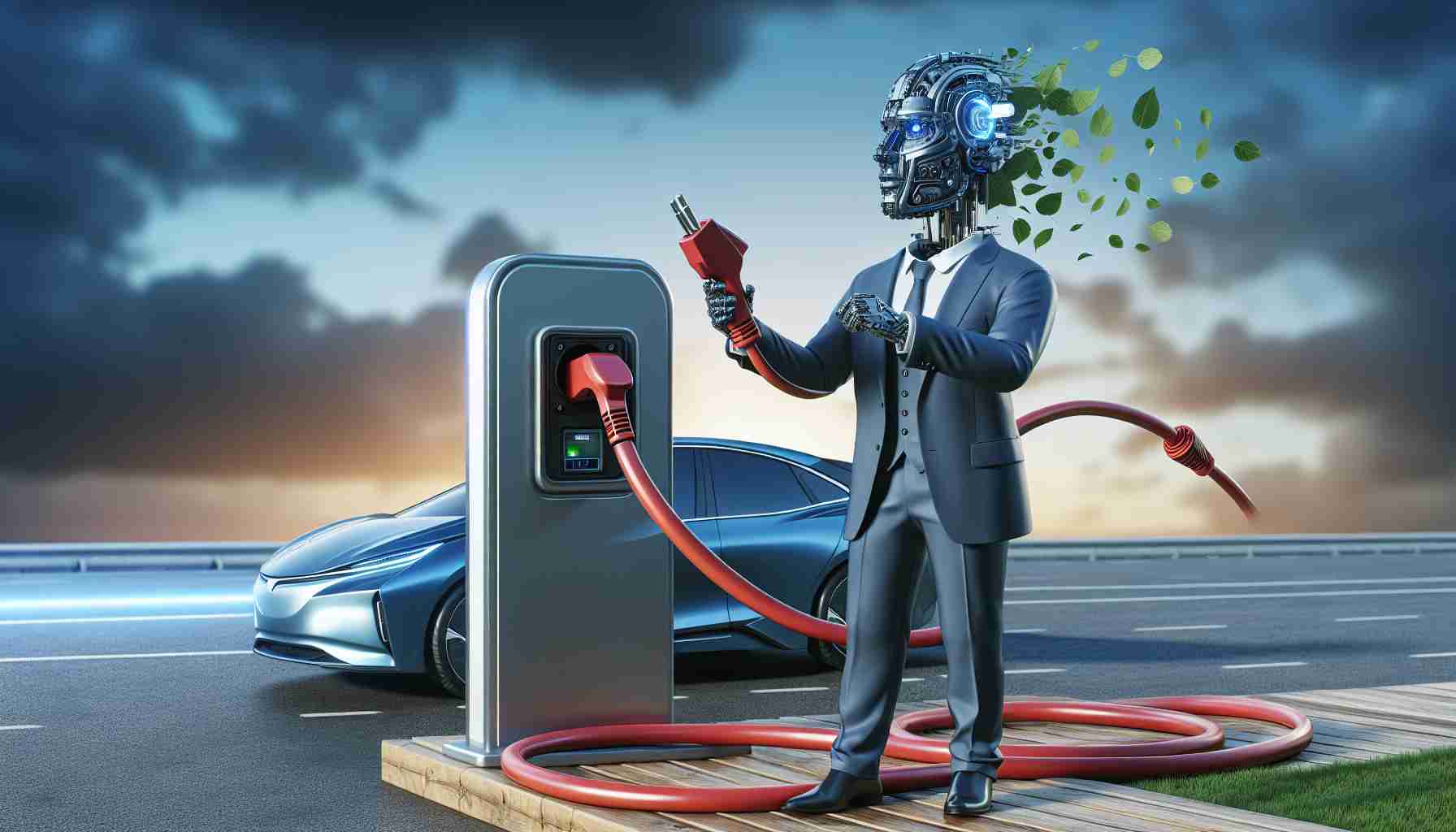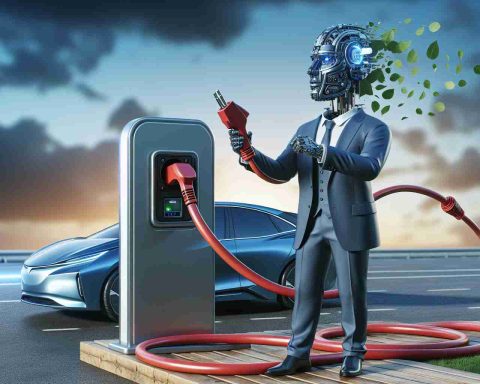- The Trump administration has suspended key funding for electric vehicle (EV) charging infrastructure, impacting ongoing deployment plans.
- The halted program includes the $5 billion National Electric Vehicle Infrastructure (NEVI) Formula Program, launched under the previous administration.
- Only eight EV charging stations have been completed since NEVI’s inception, highlighting slow progress in expanding infrastructure.
- The funding cuts significantly affect Tesla, which has received $31 million from NEVI, and could reflect broader governmental spending reductions.
- There are rumors of the potential elimination of the $7,500 tax incentive for new electric vehicles, which could further challenge EV manufacturers.
- Elon Musk has shown support for the possible removal of the tax incentive, indicating an adaptive approach to changing market conditions.
A shocking decision from the Trump administration has sent ripples through the electric vehicle (EV) landscape, halting crucial funding for charging infrastructure. The U.S. Department of Transportation’s Federal Highway Administration (FHWA) recently announced the suspension of several grant programs, including the significant $5 billion National Electric Vehicle Infrastructure (NEVI) Formula Program. This sudden freeze puts the brakes on state deployment plans for EV charging stations across the nation for the entire fiscal year.
Originally launched under the Biden administration as part of a massive infrastructure initiative, the NEVI program aimed to bolster a nationwide network of charging stations. However, progress has been painfully slow. As of now, only eight EV stations have been completed since the program’s inception, raising eyebrows and criticisms for its lack of tangible results.
The implications of this funding cut are monumental, particularly for Tesla, which has received $31 million from NEVI, ranking as one of its largest benefactors. While this move may seem like an indirect jab at Tesla’s leader, Elon Musk, it aligns with Trump’s broader agenda to cut federal spending.
On top of that, rumors swirl that the administration may eliminate the $7,500 tax incentive for new electric cars, further complicating the landscape for EV manufacturers like Tesla. In a surprising twist, Musk has expressed support for this potential change, indicating a willingness to adapt to the evolving economic climate.
As the future of electric vehicles hangs in the balance, one thing remains clear: the road ahead will be a bumpy ride without adequate charging infrastructure.
The EV Funding Freeze: What You Need to Know Now!
Impact of Funding Cuts on Electric Vehicle Infrastructure
The recent suspension of several grant programs by the Trump administration, most notably the $5 billion National Electric Vehicle Infrastructure (NEVI) Formula Program, has significant implications for the future of electric vehicles (EVs) in the United States. Initially launched to enhance charging networks nationwide, the program’s halting has raised substantial concerns in the EV sector, especially as the completion rates for EV stations have been disappointingly low.
# New Insights and Trends
1. Market Trends: Despite the funding freeze, the global EV market is projected to grow significantly. According to recent forecasts, the EV market is expected to reach $1.5 trillion by 2030, driven by advances in battery technology and increasing consumer demand for sustainable transportation options.
2. State-Level Initiatives: Many states are independently moving forward with their EV infrastructure plans, leveraging local funding and incentives to promote public charging stations. This decentralized approach may help mitigate the impacts of federal program suspensions.
3. Technological Innovations: Advances in fast charging technology are emerging, with some companies developing ultra-fast chargers that can recharge EVs to 80% in under 20 minutes, potentially offsetting the need for a dense network of charging stations.
# Key Considerations
– Pros and Cons: The suspension of the NEVI program discourages some but may encourage innovation from private sectors and local governments, fostering competition and rapid development.
– Limitations: The slowdown in federal support poses challenges for rural areas that may lack the economic incentive to develop charging infrastructure independently, potentially exacerbating the urban-rural divide in EV adoption.
Frequently Asked Questions (FAQs)
1. What will happen to current EV infrastructure projects in the U.S.?
With the suspension of NEVI funding, some ongoing projects may face delays or require alternative funding sources. States are encouraged to seek local grants or partnerships with the private sector to maintain momentum.
2. How might the potential elimination of the $7,500 tax incentive affect EV sales?
The repeal of the EV tax credit could lead to a reduction in demand, especially among price-sensitive consumers. This change might prompt manufacturers to adjust pricing strategies or enhance their offerings to sustain sales amid changing incentives.
3. Are there any ongoing federal initiatives to support EVs despite the funding cuts?
While NEVI funding is on pause, the federal government does support EV adoption through other programs such as national research initiatives, partnerships with private companies, and various eco-friendly policies aimed at promoting sustainable transportation solutions.
For more detailed information and updates, you can visit the official site: Energy.gov.














